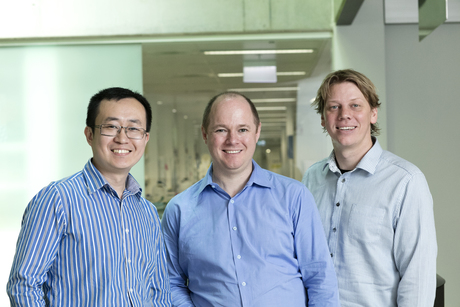Balnaves Foundation funds two more child cancer researchers

The Balnaves Foundation, a private philanthropic organisation set up by Neil Balnaves AO in 2006, has awarded two Children’s Cancer Institute Australia (CCIA) researchers $100,000 each to explore uncharted territory in childhood cancer.
Dr Daniel Carter will be exploiting single-cell profiling technology to seek out effective drug targets in neuroblastoma. Dr Duohui (Vincent) Jing will meanwhile examine the 3D structure of DNA in white blood cells to determine which children with acute lymphoblastic leukaemia (ALL) will respond to standard treatment and which children will not.
Dr Carter will attempt to isolate the descendants of the very first nerve cells to become cancerous in neuroblastoma. The genetic make-up of these original cells will help explain exactly how neuroblastoma develops and how best to tackle it with drugs.
“Prior to single-cell profiling technology, we had to examine the whole organ where neuroblastoma forms, and could only average the genetic profile across hundreds of millions of cells,” said Dr Carter.
“Single-cell analysis now allows us to determine the exact genetic makeup of separate cells. The pressing question for me is: what differentiates a cell that may have a kind of precancer characteristic — but is essentially harmless — from one that can actually transition and evolve into an advanced cancer?
“There is one marker that appears to distinguish between the harmless cells and their more lethal counterparts — and that is what I will be examining in this project.”
Dr Jing’s project will look at the standard protocol for treating patients with leukaemia. Every patient is treated with glucocorticoids for one week and their response determines what the next treatment step will be. Glucocorticoids target glucocorticoid receptors in DNA, which bring about cell death.
Depending on how DNA is folded and compacted into the nuclei of our cells, certain genes will be on the surface, allowing them to be activated. Dr Jing has discovered that patients who respond well to glucocorticoids during the first week of treatment have an open DNA structure at a specific location, while patients resistant to chemotherapy have a closed DNA structure at the same location.
“In my recent study I found one region of DNA that responded to glucocorticoids, and with this Balnaves grant I intend to see how many others I can find,” said Dr Jing.
“What I hope to find is a ‘gene signature’, or cluster of genomic regions with an open configuration, that indicate sensitivity to chemotherapy.
“I will also be looking for differences in the regulatory regions of the genome, because these can produce different outcomes even in patients whose DNA structure looks similar.”
The Balnaves Foundation every year offers young researchers the chance to apply for competitively awarded grants of $100,000. General manager Hamish Balnaves hopes the foundation has provided the opportunity for Dr Carter and Dr Jing to progress their work to a stage where it might be published and has a reasonable chance of attracting peer-reviewed funding.
Oxytocin analogue treats chronic abdominal pain
Researchers have developed a new class of oral painkillers to suppress chronic abdominal pain,...
'Low-risk' antibiotic linked to rise of dangerous superbug
A new study has challenged the long-held belief that rifaximin — commonly prescribed to...
Robotic hand helps cultivate baby corals for reef restoration
The soft robotic hand could revolutionise the delicate, labour-intensive process of cultivating...




